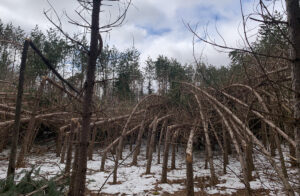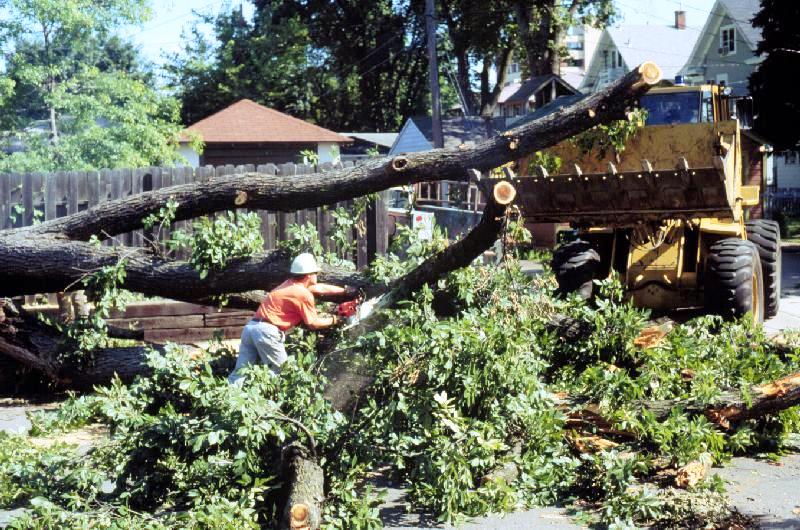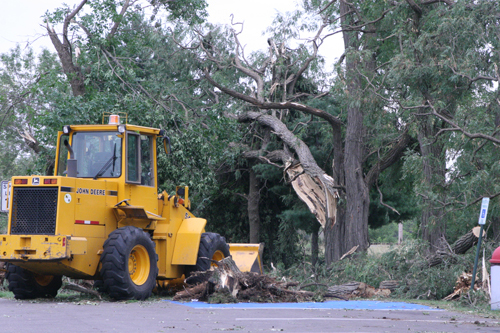
Young red pine trees bent over and flattened by the weight of ice and snow. They will not recover. / Photo Credit: Levi Koski
By Linda Williams, DNR Forest Health Specialist, Woodruff
Linda.Williams@wisconsin.gov, 920-360-0665
and Sam Blake, DNR Forester, Crandon
Samuel.Blake@wisconsin.gov, 715-216-6396
On Saturday, March 29, and continuing throughout the day on Sunday, March 30, northeastern Wisconsin experienced freezing rain, causing ice accumulations of one-quarter to one-half inch.
The freezing rain weighed down branches of trees. Then, to add to the weight of the ice on the trees, the freezing rain changed to wet, heavy snow with accumulations of up to 7 inches. The combination of ice and wet, heavy snow caused branches to break. In some cases, entire trees broke off.
Pine plantations seemed to be hardest hit, with the tops of some trees becoming so weighed down that trees leaned over and stems snapped. Continue reading “Ice Storm Damage Found In Northeastern Forests”

 The Wisconsin Department of Natural Resources (DNR) is now accepting applications for Wisconsin Urban Forestry Catastrophic Storm Grants.
The Wisconsin Department of Natural Resources (DNR) is now accepting applications for Wisconsin Urban Forestry Catastrophic Storm Grants. Severe weather can destroy Wisconsin communities and result in hefty cleanup costs. While public works budgets and insurance may cover some expenses, the costs might exceed available funding.
Severe weather can destroy Wisconsin communities and result in hefty cleanup costs. While public works budgets and insurance may cover some expenses, the costs might exceed available funding.